It might be discouraging to discover scratches on the plastic. It can happen if you use the automobile for an extended time. Your children, your clothing, or accidents may cause it. Fortunately, these scratches don’t have to remain on your vehicle, and there are several methods for removing them.
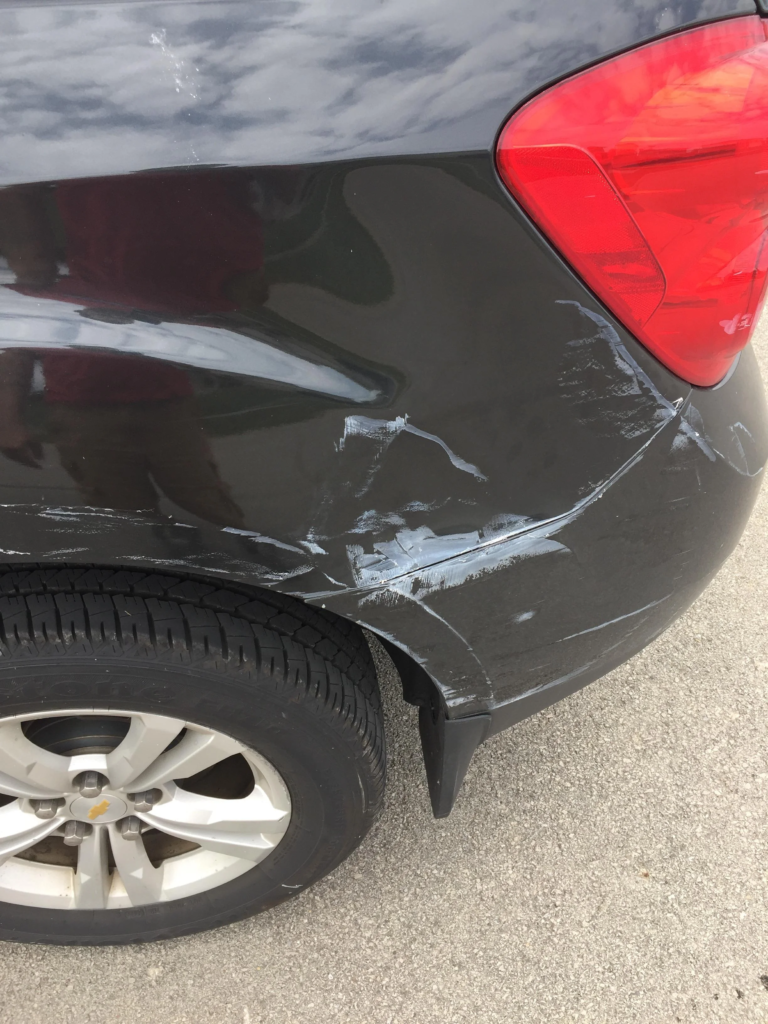
Moreover, taking the car for maintenance or scratch removal can be time-consuming and expensive. But there are scratch removal methods that do not require a specialist to fix your car.
Table of Contents
How To Fix Scratched Plastic In Car
Here is a general guide on How To Fix Scratched Plastic In Car:-
- Clean the area thoroughly.
- Sand the scratched area with fine-grit sandpaper.
- Apply a plastic repair compound and smooth it out with a putty knife.
- Sand the repaired area again with fine-grit sandpaper.
- Wipe the area clean with a cloth and apply a coat of plastic polish.
Types Of Plastic Scratches
Scuffs
The first form of damage you might notice is a scuff, which occurs whenever an object, including a shoe, rubs against the plastic inside your car, transferring the color of the object’s surface and debris to the plastic inside your car. You might see the scuffs on the inside of the door or in between the seats.
If you drag your feet while getting out of the vehicle, that may cause a problem. Scuffs aren’t permanent harm to your car’s inside plastic; they’re merely superficial scratches that you can erase with a little elbow grease.
Scratches
While scuffs are less in-depth, scratches are greater in-depth because they rip or tear the plastic panel surfaces. Most of the time, they are produced by things with sharp edges, such as small knives or screwdrivers, accidentally rubbing against the plastic surfaces of the car’s interior.

Chips
Chips are when a little piece of plastic comes loose from the plastic in your car’s interior and lands on the floor. When the plastic in an old automobile becomes worn out, this is a common occurrence. Chips seem to be the most challenging to fix since they require the removal of small fragments of plastic from the interior of your automobile.
Suppose you do discover that the inside of your vehicle’s interior is beginning to chip. In that case, you must make every effort to keep the breakaway parts as intact as possible since it is difficult to obtain similar-looking bits of plastic to replace the broken-off portions.
Cracks
In high-stress locations, automobile interior plastic may become brittle and fracture, depending on the density and quality of the material. Additionally, cracks may appear in regions that experience bright sunlight. Because some cracks are difficult to detect, you should regularly inspect your automobile’s interior plastic surfaces to look for cracks.
Steps to Remove Scratches from Your Car Interior
Eliminate the High Spots
When there are several scratches on your car, it is common for the plastic to detach from the scrapes and travel a long distance.
The other plastic creates an uneven edge and a high place in some ways. As a result, the first step is to eliminate any high spots that may have developed in the afflicted regions.
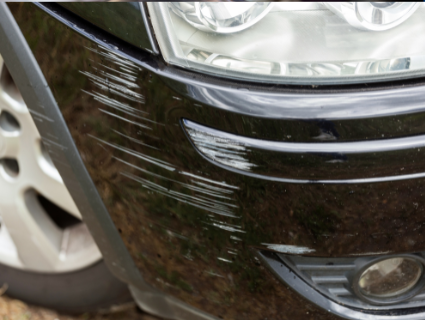
You may use anything such as a razor blade to a piece of sandpaper to accomplish this task. We’d recommend that you use a razor blade instead.
You’ll be able to see what you’re doing, and the outcome will be better. Make certain, however, that your hands remain firm.
Surface Cleaning With A Microfiber Cloth
To get the greatest results from a vehicle plastic scratch remover or the finest black plastic trim restorer for automobiles, you must first follow a few simple measures and ensure that you repair the scratches on the car’s surface. After cleaning and polishing the scratched areas, the following step is to wipe the whole surface with a microfiber cloth.
The cloth will collect any moisture that may be present on the automobile surface, allowing it to become dry enough to apply the trim restorer to it. Before moving on to the next stage, it is vital to wipe out the surface using a high-quality microfiber cloth.
Restore The Texture Of The Surface
To restore the texture, you’ll need to locate a DIY vehicle interior scratch remover. Because there are so many options, make sure you choose the one that includes glue sticks and a glue gun.
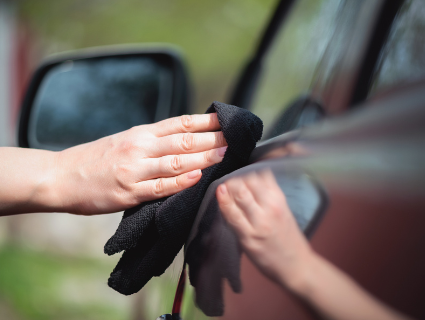
Now, let’s get down to business with the procedure. You’ll need to locate an undamaged spot within the vehicle’s interior.
Then spray a little amount of dashboard cleaner over the area and wipe it down. It will help you verify that the surface is smooth and prepared for the glue sticks to be applied.
Then apply some PDR glue to the glue sticks and fix them to the region without harm.
Let it dry a little before continuing. Remember that these items dry quickly, and you shouldn’t leave them out for too long.
The most critical aspect of this stage is the execution time. You must separate the adhesive at the appropriate moment. It must be tough enough to preserve its surface texture without adhering to the panel’s surface.
Degrease the Plastic Trim Properly
You must take a deep breath and attempt to follow the procedures to keep the restoration more doable. It is the most important step so far.
You must thoroughly clean the plastic trim, make the surface cleaner, and eliminate all forms of pollutants accumulated on it over time. If you are looking for the finest plastic degreasers for your car’s exterior, you might try purchasing a citrus extract solution.
Whereas these heavy-duty degreasers are efficient for grease removal, they also benefit from caring for the outside surface of your automobile by accident. Additionally, these cleaners and degreasers would aid in smoothing the surface, making the mending procedure much simpler.
Paint the Entire Area
Now it’s time to apply some prep spray to the surface. Spray a light coat of prep spray over the surface to ensure that the paint adheres nicely.
Before you begin painting, be certain that you have the correct color code for the surface. After you complete it, hide the surrounding regions with tape.
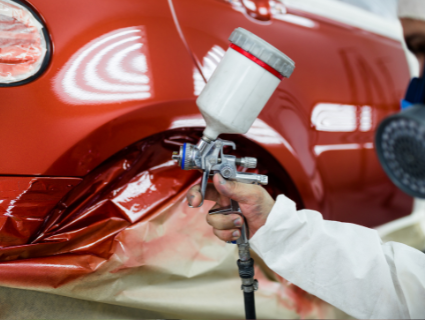
Then begin applying the paint just on the interior of the vehicle. After applying a light coat of paint, allow it to cure for a minimum of 5 to 6 hours before moving on.
If the repair does not meet your expectations, you have the option to restart the entire process. After several tries, you’ll have it down pat.
If you follow these easy methods, you will not have to spend a lot of money, effort, or time trying to remove scratches off black plastic bumpers or black plastic trims. Just follow the instructions, and the scratch will be gone!
How to Fix Scratched Plastic in Car – DIY Steps
To complete a DIY project successfully, one must first ensure that they have all the necessary types of equipment. Dashboard repair falls into the same category as external automobile jobs such as clear coat paint protection, which each has its list of required components.
- Heat gun – A tool to heat and remold plastic.
- Interior grain pad for retexturing plastic to replicate the original texture.
- The best sandpaper to use with a superfine grain.
Purchase a high-quality cleaner that will remove embedded grime from plastic surfaces, and you can use it in automobiles.
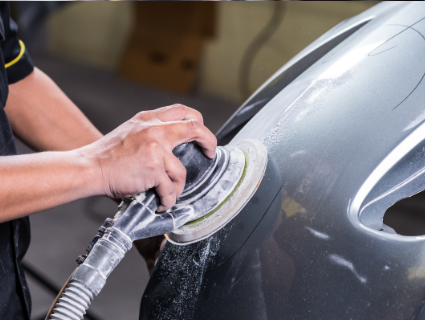
Add Some Household Hacks
Clean The Automobile
Since it is a frequently utilized region, the automobile inside can rapidly get dusty and shabby. Cleaning your automobile and removing dirt and scratches might reduce its value and make it even harder to sell if you are selling it.
When dusting the automobile’s interior, use a vacuum cleaner to remove any surface debris. Then, using a small brush or cloth dampened with warm water, remove any remaining surface filth. If there are any difficult-to-reach locations, use a tiny paintbrush or cotton bud to remove obstinate dust and debris.
Use regular cleaning spray to treat stains if the spray is appropriate for cleaning the area. Using a plastic protection spray, you can guarantee that the automobile remains clean and shining for as long as it is reasonably practical.
Use Toothpaste
One inexpensive DIY household trick for removing scratches from plastic would be to use a mild abrasive such as toothpaste as a scratch remover. The initial steps in this process are cleaning the damaged plastic surface with a standard car interior cleaner and drying it with a microfiber towel. Use a moist cloth to apply the toothpaste (or other comparable substance) to the scratched surface and massage it in circular movements. Continue to do so until the scrapes are no longer visible. Next, you should use another towel to wipe away any remaining toothpaste and dirt. This procedure is the most effective when dealing with minor, superficial scratches.
If you have deeper scratches, you might experiment with different grades of sandpaper. Clean the surface first, then immerse 800-grit sandpaper in water for a few minutes.
Sand down the chipped area using gentle pressure and circular movements after the sandpaper has become wet. The water serves to maintain the sandpaper from becoming excessively abrasive, but it also aids in clearing away sand and other debris from the work area.
Remove Scratches Using Baking Soda Paste
You can remove light scratches on the plastic of your car’s interior with the help of baking soda. Baking soda is a mineral abrasive. Use two parts baking soda and one part water to form a thick paste that will remove the scratches as effectively as possible. You should apply the paste to the scratched area with a towel.
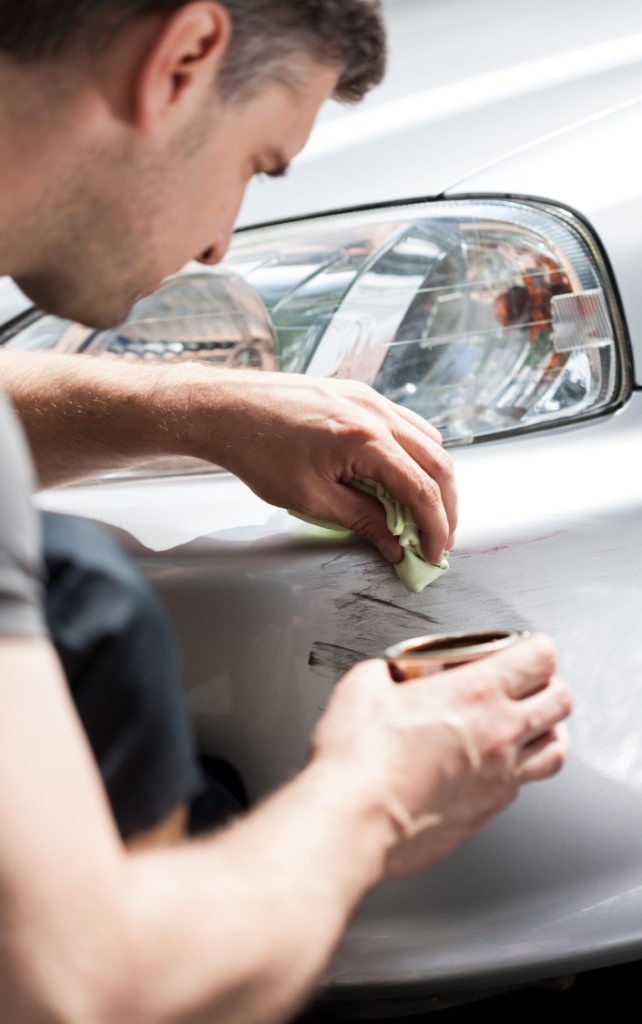
Work the paste into the scratch with circular strokes to buff it completely. Once you’ve finished, rinse the area to keep track of your progress. If you have not been able to remove the scratch, continue the procedure until you get rid of it completely and the plastic seems to be the same color as the rest of the inside.
Things To Avoid
Home cleaning chemicals are not normally used in automobiles and may discolor the dashboard materials if used in the vehicle.
You should warm up the dashboard using a blow torch before remodeling it rather than burning it.
You should avoid rough sandpaper since it has the potential to disfigure the plastic inside. It will also take far longer to smooth out the interior, and you will have to use a variety of sandpaper grades only to remove the damage caused by the coarse sandpaper in the first place. It is preferable to take a calm and gentle approach to the design whenever it comes to the inside.
Applying spray paint to remove discoloration is not a recommended method. Spray paint is for a bigger surface area, and utilizing it in your interior would cause it to splatter all over the place. Painting using a brush rather than spraying paint is a much superior method.
How to Avoid Further Damages in Your Car
Now that you have repaired the plastic of the automobile inside, you must exercise caution to avoid scratches in the future. So that you don’t have to repeat the same procedure after a few months, keep your windows closed when you’re going at a fast speed. As a result, hard minerals will not be able to enter the building through the air intake and scrape the surface again.
Please do not transport sand, metal, and any other abrasives in your vehicle. These particles have a high scratch resistance to plastic.
FAQs
Can you remove scratches from car plastic?
Scratches on car plastic can be removed using specialized plastic polishing compounds, toothpaste, or baking soda mixed with water, followed by a thorough cleaning and application of a protectant.
How do you fix deep scratches in plastic?
Deep scratches in plastic can be fixed by sanding the area with fine-grit sandpaper, using a plastic filler or epoxy, and finishing with a plastic polish.
How do you remove scratches from the car interior?
Scratches in the car interior can be removed using a plastic polish or a homemade solution like toothpaste or baking soda mixed with water, followed by a thorough cleaning and application of a protectant.
Does Toothpaste remove scratches from plastic?
Toothpaste can help remove minor scratches from plastic. Apply a small amount of toothpaste to a soft cloth and gently rub the scratched area in a circular motion. Rinse with water and dry the surface to assess the results. Repeat if necessary.
Wrapping Up
The most important thing to know about any of these scratch removal treatments is that you must apply them with caution. If overdone or carried out with insufficient care, they may be effective in removing scratches but will detract from the appearance of the plastic surface. Furthermore, prevention is always the best protection for interior vehicle scratches. Make an investment in scratch-preventing polishes and waxes for the plastic surfaces in your automobile’s interior.
